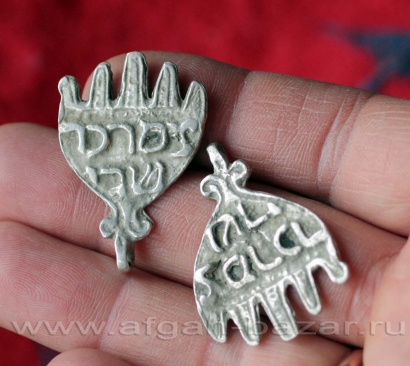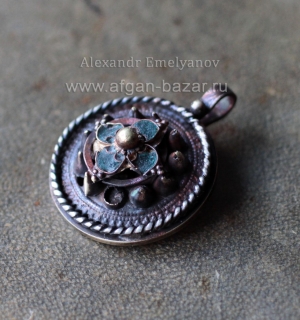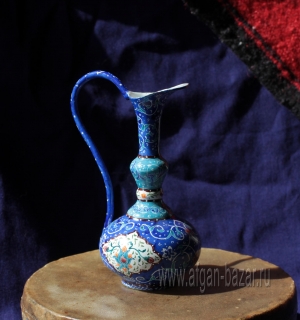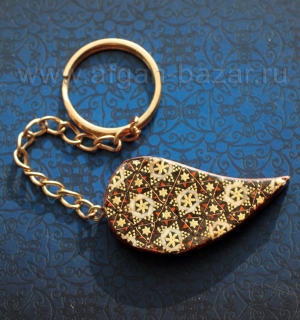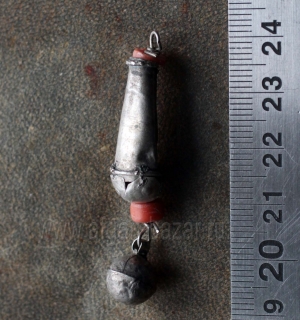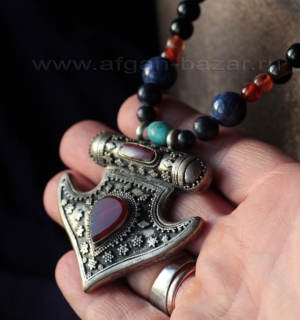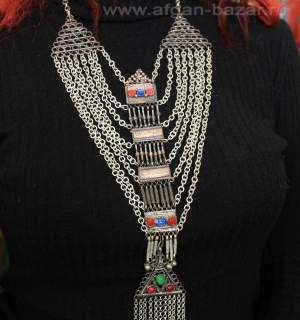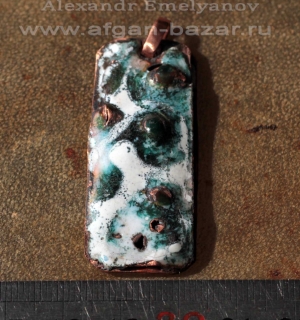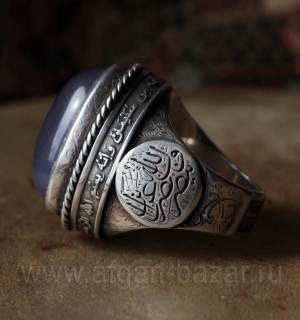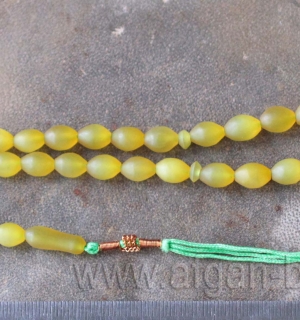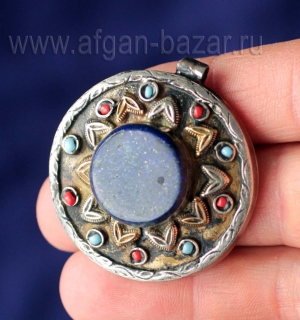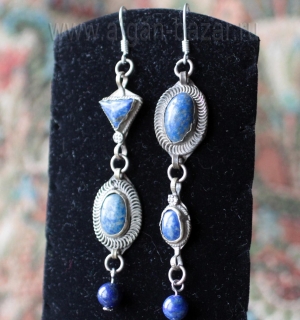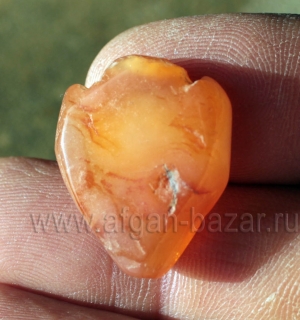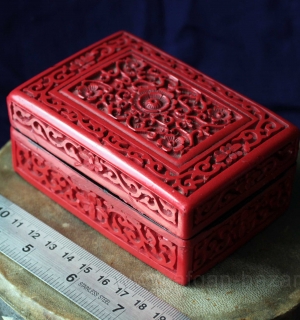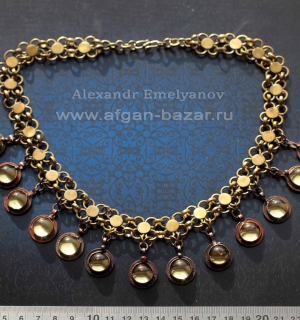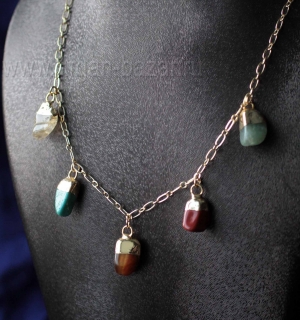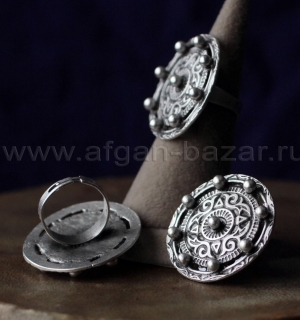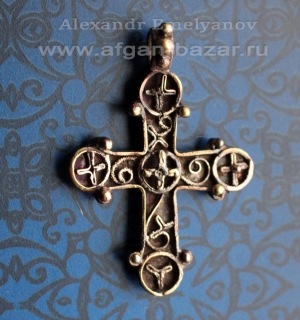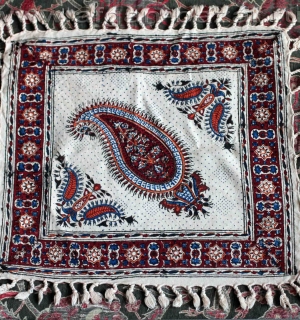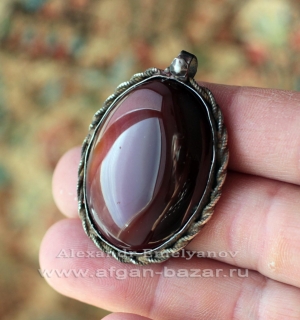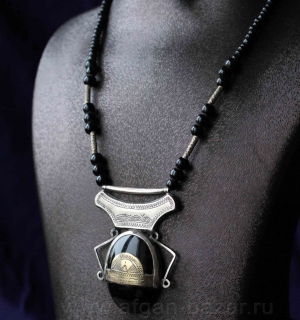Подвеска-амулет Хамеш ("хамса" по арабски) с надписью на иврите.
Марокко, сефарды (марокканские евреи), первая половина 20 в.
Серебро (около 80%), литье в землю.
Размер - 40/27 мм.
Диаметр петли - 2 мм.
Вес - 5 г.
Надписи расположены так, что читаются когда подвеска расположена пальцами вверх, будучи подвешены на шнурок, надписи оказываются в перевернутом виде.
1 - я строка: "Шаддай", שדי - одно из имён Бога в иудаизме.
2 - я строка - צמרכד (пять последних букв первых пяти стихов Книги "Бытие").
Таким образом, подвески являются каббалистическими амулетами от сглаза и болезней.
Приобретено в Марокко (Тизнит) в 2019 г.
Подобные подвески входят в состав колье, датируемого началом 20 в., представленном в каталоге Wolf-Dieter Seiwert. Jewellery from the Orient. Treasures from the Bir Collection на стр. 70 [1].
До середины 20 в. в различных регионах Марокко проживало большое количество евреев, переселившихся туда после реконкисты Испании в 16 в.
Большинство марокканских сефардов (особенно жители горных регионов Атласа и Анти-Атласа) ассимилировалось в одежде и украшениях с местным арабским и берберским населением. Наборы украшений для свадьбы и повседневной жизни берберов и сефардов практически не отличались и изготовлялись одними и теми же ювелирами (зачастую евреями, как в Йемене). Единственным существенным отличием в костюме марокканских сефардов были высокие коронообразные головные уборы, расшитые мехом, жемчугом, мелкими металлическими подвесками.
Traditional Moroccan Pendant Khamsa,
Morocco. Sephards Jewelry, first half - middle of 20th century
Silver (about 80 %), cast, engraving, embossing,
Size - 40/27 mm (1,6/1 ").
Diametr of the loop - 2 mm.
Weight is 5 g. (0,2 Oz).
The inscriptions are arranged in such a way that they are read when the pendant is placed with the fingers up, being hung on a string, the inscriptions are inverted.
1st line: "sHaddai",י שדי is one of the names of God in Judaism.
The 2nd line is צמרכד (the last five letters of the first five verses of the Book of Genesis).
thus, the pendants are amulets against the evil eye and diseases)
The amulet is made in the form of a stylized image of a hand, hence the name Hamsa (five, the palm (arab.)) or Hamesha (jewish)
This is one of the oldest kinds of amulets in the Middle East.
In Islamic tradition this amulet sometimes called the "Hand of Fatima" and is associated with memory of the daughter of the Prophet Fatima. More often about it just say "Hamsa" ("five", Arab.). The esoteric meaning of the hand with five fingers is associated with the "five pillars of Islam" - the five obligatory for every Muslim action or obligation of five times of prayers throughout the day. Ordinary people gives this amulet protective powers from the evil eye and evil spirits. This is a very ancient tradition in the countries of North Africa and the Middle East to leave hand prints on the walls, and especially the abandoned buildings that there is no settled demonic entity [3].
References:
1. Wolf-Dieter Seiwert. Jewellery from the Orient. Treasures from the Bir Collection. – Stuttgart: Arnoldshe 2009 – p. 70.
2. Francis Ramirez, Christian Rolot/ Bijoux du Maroc. / Ramirez F., Rolot C. - Paris: ACR Edition, 2002. – p.96.
3. Anne Leurquin. A World of Neckleaces. Africa, Asia, Oceania, America from Ghisels collection. / Anne Leurquin – Milano: Scira Editore S.p.A. 2003 – p. 24.
4. Sigrid van Roode. Desert Silver. Nomadic and traditional silver jewelery from the Middle East and North Africa / Sigrid van Roode – Amsterdam: KIT Publishers 2010 – p. 56

